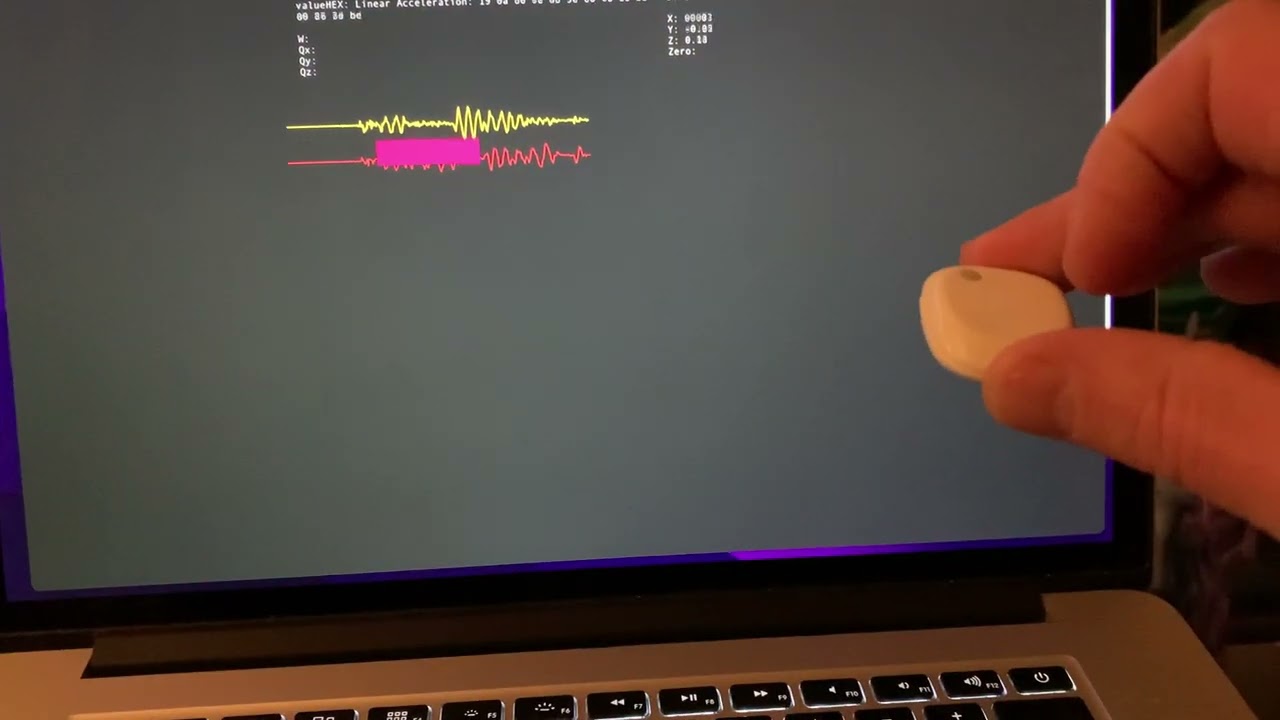Unfortunately manufacturer is not very good at responding and everything runs via c-sharp and python or via node and feels pretty confusing. So I'm reverse engineering stuff and looking at forums and articles.
I thought that maybe using native physics in Hype would be better, so used a method I found by @Photics here Physics Mini Templates for Tumult Hype 4
It's quite interesting, but still feels like the same logic problem. If the motion is continuous the response is pretty good it seems. But if there is a stop-start, the motion is reversed back to start (or close enough). So I made a little file to illustrate my thinking.
scurve.zip (55.9 KB)
Any suggestions how to make such logic work?
Here is the code I'm using at the moment:
var paddle = document.querySelector('#paddle');
var currentPosX = hypeDocument.getElementProperty(paddle, 'left')
var currentPosY = hypeDocument.getElementProperty(paddle, 'top')
var accelerationXPointsArray = [];
var accelerationYPointsArray = [];
var viewBoxX = document.querySelector('#accelerationX_path').parentNode;
viewBoxX.setAttribute("viewBox", "0 -100 866 200");
var viewBoxY = document.querySelector('#accelerationY_path').parentNode;
viewBoxY.setAttribute("viewBox", "0 -100 866 200");
var steps = [];
var step = -1;
var stepSize = 1;
var command = 'M ';
var i = 0;
var accelerationX = 0;
var accelerationY = 0;
function mjsApplyForce (xPosition, yPosition, xForce, yForce) {
hypeDocument.setElementProperty(paddle, 'rotateZ', 0);
Matter.Body.applyForce(hypeDocument.getElementProperty(paddle, "physics-body"), {x: xPosition, y: yPosition}, {x: xForce, y: yForce});
}
setInterval(function(){
accelerationX = document.querySelector('#x').textContent / 9.81;
accelerationY = document.querySelector('#y').textContent / 9.81;
mjsApplyForce(currentPosX, currentPosY, accelerationX, -accelerationY)
step += stepSize;
steps.push(step);
accelerationXPointsArray.push(command + steps[i] + ' ' + accelerationX*60 + ' ');
accelerationYPointsArray.push(command + steps[i] + ' ' + accelerationY*60 + ' ');
command = 'L ';
var accelerationXPath = document.querySelector('#accelerationX_path');
accelerationXPath.setAttribute('d', accelerationXPointsArray.join(' '));
var accelerationYPath = document.querySelector('#accelerationY_path');
accelerationYPath.setAttribute('d', accelerationYPointsArray.join(' '));
i++
},50);
Thanks
